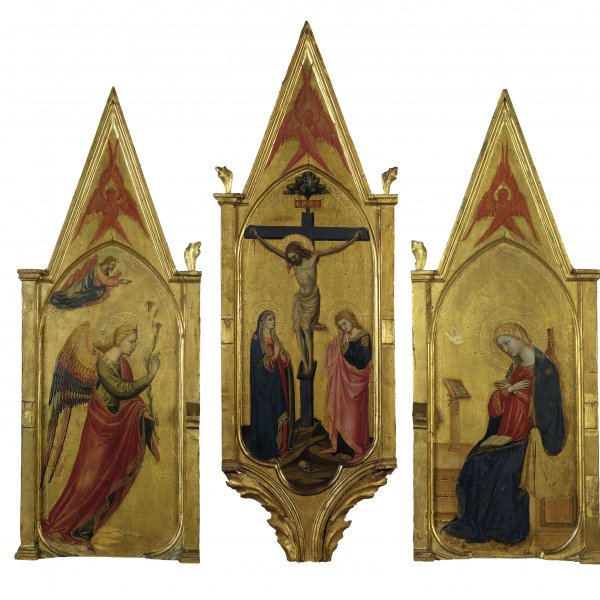Bicci di Lorenzo
Florence, 1373-1452
Bicci di Lorenzo was born in Florence in 1373. He trained in his father’s workshop, which he subsequently ran and considerably expanded until it became one of the most active in Florence. His work, particularly in its early phase, reveals the influence of Gentile da Fabriano. While he remained faithful to the tenets of Trecento art, Bicci di Lorenzo updated his style and incorporated Renaissance decorative motifs. The result was a traditional, archaic manner that remained in used until the mid-15th century and responded to the taste of his patrons.
Between 1385 and 1408 Bicci di Lorenzo was registered in the Arte dei Medici e Speziali. His first known, dated work is the Annunciation Triptych (1414) in the church of San Lorenzo a Porciano in Stia in the province of Arrezzo (now in the church of Pieve di Santa Maria Assunta, also in Stia). Many of his works are documented, including the frescoes for San Ambrosio, Florence (1421), the triptych for Pieve de Empoli (1423), various frescoes for Santa Croce in Florence (1427, 1433 and 1441), the paintings for the Compagni chapel (1434), and an altarpiece for Santa Trinità in Florence (1437; now in London, Westminster Abbey). We also have concrete references to other works, including the polyptych for the church of San Niccolò di Cafaggio (1433) and the frescoes for Santa Trinità and the Duomo (1439–1440), the latter two projects in Florence. Late in his life Bicci di Lorenzo worked with Domenico Veneziano in the Florentine church of San Egidio and subsequently collaborated with Andrea del Castagno. In 1445 he began the frescoes for the church of San Francesco in Arezzo but was not able to complete them for reasons of poor health.
Bicci di Lorenzo, who died in Florence in 1452, was undoubtedly one of the most prolific painters of the first half of the 15th century. His workshop continued to function after his death and was run with great success by his on Neri.
Between 1385 and 1408 Bicci di Lorenzo was registered in the Arte dei Medici e Speziali. His first known, dated work is the Annunciation Triptych (1414) in the church of San Lorenzo a Porciano in Stia in the province of Arrezzo (now in the church of Pieve di Santa Maria Assunta, also in Stia). Many of his works are documented, including the frescoes for San Ambrosio, Florence (1421), the triptych for Pieve de Empoli (1423), various frescoes for Santa Croce in Florence (1427, 1433 and 1441), the paintings for the Compagni chapel (1434), and an altarpiece for Santa Trinità in Florence (1437; now in London, Westminster Abbey). We also have concrete references to other works, including the polyptych for the church of San Niccolò di Cafaggio (1433) and the frescoes for Santa Trinità and the Duomo (1439–1440), the latter two projects in Florence. Late in his life Bicci di Lorenzo worked with Domenico Veneziano in the Florentine church of San Egidio and subsequently collaborated with Andrea del Castagno. In 1445 he began the frescoes for the church of San Francesco in Arezzo but was not able to complete them for reasons of poor health.
Bicci di Lorenzo, who died in Florence in 1452, was undoubtedly one of the most prolific painters of the first half of the 15th century. His workshop continued to function after his death and was run with great success by his on Neri.





